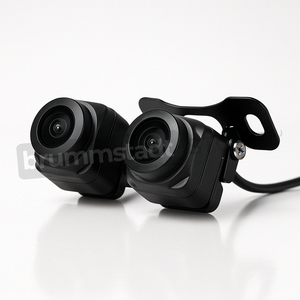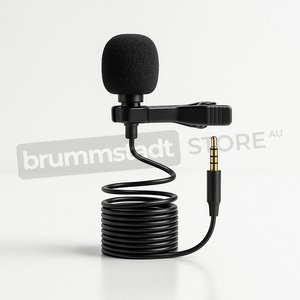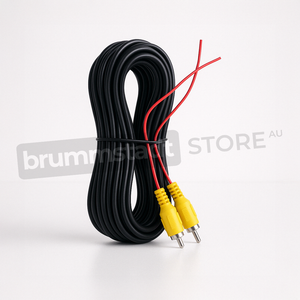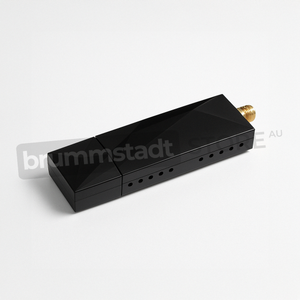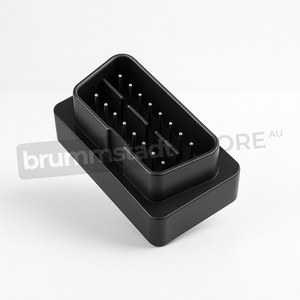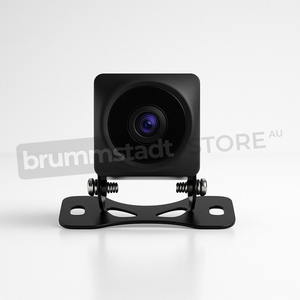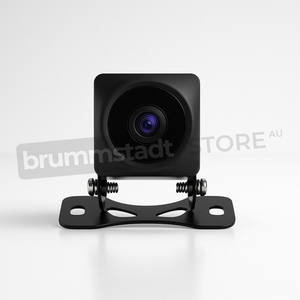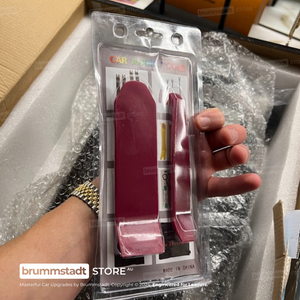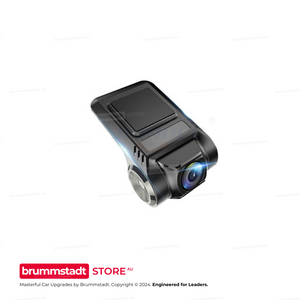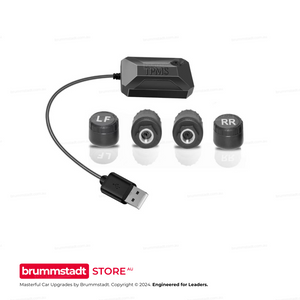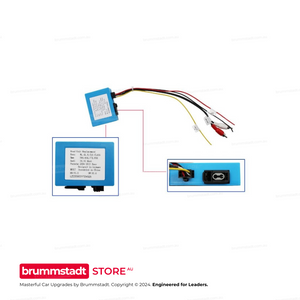Frequently Asked Questions
Everything you need to know about this head unit
Connect the single RCA cable with the yellow plug (included in your package) to extend your Bluetooth signal. This cable doubles as both a camera input AND a Bluetooth/WiFi antenna extension. The two small blue wires attached are antenna boosters that significantly improve connection stability. This simple connection takes 30 seconds and resolves 90% of Bluetooth issues. Make sure it's firmly connected even if you're not using a rear camera.
Try these proven solutions:
1. Quick Fix: Settings → Apps → Z-Link → Disable → Enable → Open (repeat each use)
2. Check Cables: Use the data/charge USB cable (not charge-only)
3. Bluetooth Setting: Disconnect all other Bluetooth connections - CarPlay needs exclusive access
4. Factory Reset Z-Link: Find the pink 'RESET' app, restart, reconnect Bluetooth, then try Z-Link
5. Sound Issues: Switch audio source to 'AUX' or 'USB/AUX' in your vehicle menu
Most issues are resolved with step 1 or 3!
The processor differs between models: The 2/32GB has a 4-Core processor, while 4/64GB and 8/128GB models feature the powerful 8-Core Cortex-A55 processor. Combined with RAM differences: The 2/32GB model with its 4-Core processor and limited RAM may experience slowdowns with heavy multitasking. The 4/64GB with 8-Core provides smooth performance for most users - no lag, seamless app switching, and enough storage for maps and music. The 8/128GB with 8-Core offers maximum performance with its generous RAM allowing unlimited multitasking and massive storage for extensive media libraries. Think of RAM like your desk space - more RAM means you can have more apps open simultaneously without slowing down.
Absolutely normal! These head units are complete replacement systems with their own GPS antenna, microphone, and Bluetooth module. Your factory connectors for these features won't be needed anymore. The important connections are: main power harness, speaker outputs, and the yellow RCA cable (even if not using a camera - it extends Bluetooth range). Any leftover factory plugs can be safely tucked away. If you're unsure about any connection, our support team is here 7 days a week.
Z-Link updates are handled through system firmware updates. Go to Settings → System → System Update. If an update is available, download it to a USB drive (FAT32 format) and install. Important: Never download Z-Link APKs from unofficial sources - they won't work and may cause issues. If you're having compatibility issues with newer iOS versions, the disable/enable workaround (Settings → Apps → Z-Link) usually resolves them while waiting for official updates.
Consider your usage:
• 2/32GB (4-Core): Budget option - fine for basic use, but may lag with multiple apps due to 4-Core processor and limited RAM
• 4/64GB (8-Core): Sweet spot - smooth Android Auto/CarPlay, multitasking, and ample storage
• 8/128GB (8-Core): Premium choice - unlimited multitasking, massive storage, future-proof for years
Most customers choose 4/64GB for the perfect balance of performance and value. The extra RAM makes a huge difference in daily smoothness!
The yellow RCA cable's blue antenna wires also boost WiFi signal! Make sure this cable is connected. Additionally, try these tips: Position the blue antenna wires away from metal surfaces, check that your phone's hotspot is set to 2.4GHz (not 5GHz) for better range, and ensure the head unit's WiFi sleep policy is set to 'Never' in Settings → WiFi → Advanced. For best performance with wireless CarPlay, keep your phone within 1-2 meters of the head unit.
Go to Settings → Sound → Equalizer and adjust to your preference. For more volume, increase the 'Loudness' setting. The 4/64GB and 8/128GB models have superior audio chips that provide cleaner, louder sound. If you have an amplifier, use the RCA outputs for best quality. Also check Settings → Factory Settings (password usually 126) → Audio settings for additional gain controls. Remember: higher-spec models (4GB+) include premium audio components for noticeably better sound.
Yes! Most vehicles work instantly. If not, use the steering wheel learning app: tap the steering wheel icon, press each button on your wheel, and assign functions. For newer vehicles with CANbus, we provide CANbus modules for automatic setup. Some vehicles may need the Key1/Key2 wires connected (usually included in our harness). If you're having trouble, let us know your exact vehicle model and we'll provide specific instructions.
We offer a 30-day return policy. If it doesn't fit or there's a compatibility issue, we'll work with you to resolve it. If you change your mind, a 20% restocking fee applies. Our team verifies compatibility before shipping to minimize issues. We provide installation support 7 days a week to help resolve any problems. With our 3-year warranty and Australian-based support, you can purchase with confidence. Full details in our Refund Policy.
Historical Evolution of the Renault Trafic:
First Generation (1980-2001)
The original Trafic launched in 1980, establishing Renault’s new vision of practical commercial transportation. Initially branded as the Renault Trafic in continental Europe and identified as the Opel Arena in Germany and as the Vauxhall Arena in the UK market, the first generation quickly acquired a solid following due to spaciousness, straightforward engineering, and economical operation. Versatile configurations, from panel vans to passenger models, underlined its popularity, with the Trafic finding significant acceptance as a reliable work vehicle suitable for varied occupations.
Second Generation (2001-2014)
Renault introduced the second iteration of the Trafic in 2001, marking a revolutionary leap forward in van design and function. Developed as an alliance between Renault and General Motors, this model appeared not only in Renault form as the Trafic, but also as the Opel Vivaro, Vauxhall Vivaro, and later as Nissan's Primastar in certain markets. Sharing the same unconventional but attractive front-end styling, notably improved ergonomics, increased load-carrying capacity, and sophisticated ride quality, the second-generation Trafic set new standards in refinement and practicality. Its smooth diesel engines combined strong torque, impressive fuel efficiency, and easier urban driveability, catering fittingly to daily logistics and commercial operations.
Renault Trafic (2011-2014) – An Emphasis on Refinement
Specifically, the model spanning 2011 to 2014 represents the later stage of this second-generation cycle, refined significantly through interior enhancements and performance adjustments to elevate everyday usability. Improvements included smarter cabin layouts with upgraded materials, attention to acoustic comfort, revised instruments and driver information displays, and increased attention to driver and passenger comfort. Engine refinement progressed, prioritizing smoother and more responsive power delivery. These incremental improvements strengthened its commercial success, earning praise among operators for consistent reliability, load versatility, and resolute practicality under daily working pressures.
Complementing the Trafic’s well-regarded usability and versatility, the integration of sophisticated aftermarket infotainment technology amplifies comfort and convenience. An exemplary upgrade designed by Brummstadt aligns perfectly with Renault Trafic models from this period, thoughtfully interwoven with the vehicle's original interior aesthetics.
Brummstadt’s premium head unit notably elevates comfort, navigation, and entertainment experiences with straightforward integration of wired and wireless Apple CarPlay and Android Auto. Its direct compatibility transforms journeys, simplifying navigation through widely trusted applications like Google Maps, WAZE, and Apple Maps. Imagine concluding dinner at a favorite restaurant; the next trip to a friend's location was effortlessly pre-planned using a smartphone. Once seated comfortably in the Renault Trafic, the navigation seamlessly migrates from the mobile device onto the head unit’s clear, intuitive display via wireless CarPlay or Android Auto integration. Avoiding inconvenient manual setup or interruptions, passengers smoothly transition from social gatherings to onward journeys.
A highly beneficial optional enhancement is available in the form of front and rear 1080p HD cameras, providing useful real-time visibility improvements and offering reliable evidence recording in case of accidents or incidents—assuring additional protection and peace of mind in daily driving.
Extraordinary passenger engagement unfolds through Brummstadt's thoughtful integration of family-friendly interactive gaming capabilities. Through USB-connected joysticks, passengers can actively participate in entertaining games conveniently displayed on the infotainment system’s high-resolution screen, transforming idle travel time into enjoyable interaction.
In addition, sophisticated voice integration possibilities further elevate cabin control and convenience. Beyond standard voice-operated phone calls, navigation, messaging, and media playback, compatibility with Siri and Google Assistant enables users to manage connected smart home devices remotely, effortlessly instructing commands such as “Hey Siri, turn on porch lights,” bringing innovative connectivity solutions smoothly into daily routines.
Advantages and the Driving Experience of Renault Trafic
Named consistently as one of Europe's preferred commercial vehicles, the Renault Trafic 2011-2014 offers impressive practicality complemented by driving refinement. Its celebrated diesel engines provide a desirable blend of torque-rich power and commendable fuel efficiency, delivering dependable performance as a capable cargo transporter and comfortable daily urban commuter. Cabin enhancements from the latter second-generation phase markedly improve daily comfort and ease of operation, bolstered by thoughtful ergonomics that minimize driver fatigue even over lengthy journeys.
Introducing advanced infotainment upgrades such as Brummstadt’s offering substantially increases the Trafic’s overall convenience and enjoyment. Simplified navigation, enriched driver-assistance solutions through optional high-definition camera integration, enhanced entertainment capabilities, and sophisticated voice control integrations transform routine commutes and professional operations into genuinely enjoyable spaces. Such user-friendly technology implementations thoughtfully contribute to an elevated driving environment, offering seamless infotainment experiences that align closely with modern drivers' expectations for intelligent automotive connectivity features.
Overall, the Renault Trafic from 2011-2014 exemplifies steadfast versatility, deserved popularity among commercial users, and carefully considered refinements aimed toward making everyday experiences both productive and pleasurable. Paired with tailored infotainment advancements, it confidently maintains its position among vehicles offering lasting dependability and meaningful connectivity, clearly representing a sound balance of mechanical capability, comfort, and intelligent automotive design.







































